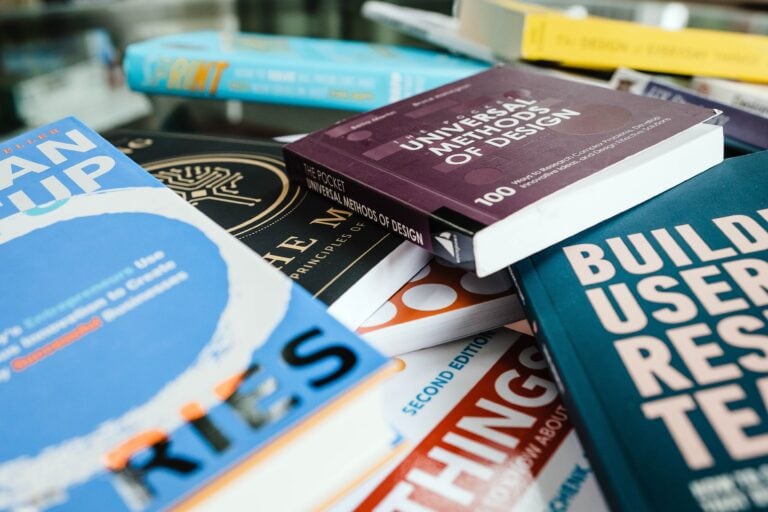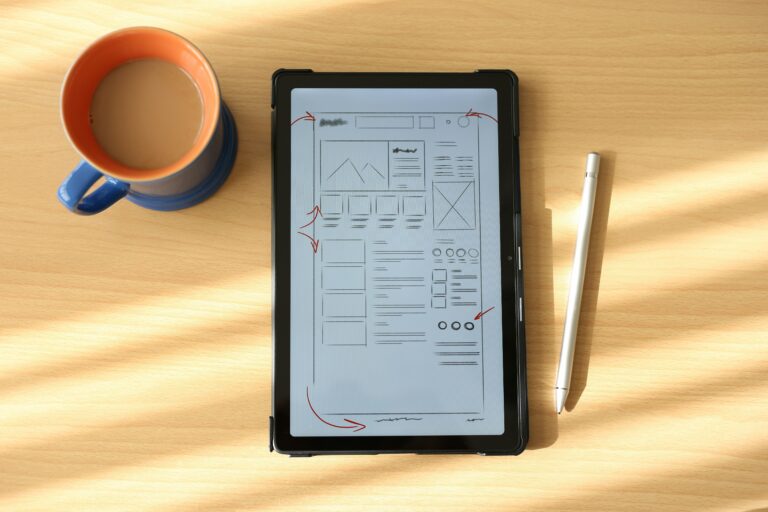Introduction
User Experience (UX) design is a crucial aspect of creating successful digital products. It involves designing and improving the interaction and overall experience that users have with a product, such as a website or mobile application. UX design principles, the design process, and the right tools play a vital role in creating delightful and user-friendly experiences. In this article, we will explore eight fundamental UX design principles, provide a comprehensive overview of the UX design process, and introduce 20 popular UX design tools on the market.
If you are looking for your next role within product design and ux, upload your CV with us today.
UX design principles
- User-centred design – The primary focus of UX design is to create products that meet the needs and expectations of users. By prioritising user-centred design, designers gather user insights, conduct research, and incorporate user feedback throughout the design process. This approach ensures that the final product aligns with users’ goals, tasks, and preferences.
- Simplicity – Simplicity is a key principle in UX design. Users appreciate intuitive and straightforward interfaces that require minimal effort to understand and navigate. By removing unnecessary complexities and providing clear visual cues, designers can enhance the user experience and reduce cognitive load.
- Consistency – Consistency in UX design promotes familiarity and predictability. Users should encounter consistent patterns, interactions, and visual elements across different parts of a product. This principle ensures that users can quickly learn and apply their knowledge from one area to another, resulting in a seamless and coherent experience.
- Accessibility – Creating accessible designs is essential to ensure that all users, including those with disabilities, can access and interact with digital products. Designers should consider factors such as color contrast, text size, keyboard navigation, and assistive technologies to provide an inclusive experience for everyone.
- Hierarchy and information architecture – Clear hierarchy and well-organised information architecture help users understand the structure and content of a product. By using visual cues, such as headings, subheadings, and consistent navigation, designers can guide users through the interface, making it easier to find relevant information and complete tasks.
- Feedback and responsiveness – Providing feedback and responsive interactions is crucial for creating an engaging user experience. Users should receive clear feedback when they perform actions, such as clicking a button or submitting a form. Additionally, designers should ensure that the product responds promptly to user input to create a sense of control and flow.
- Visual appeal – Aesthetics play a significant role in user perception and engagement. Striking a balance between functionality and visual appeal is essential. Well-designed visuals, such as attractive colour palettes, appropriate typography, and visually pleasing layouts, contribute to a positive user experience.
- Continuous improvement – UX design is an iterative process that requires continuous improvement. By analysing user behaviour, gathering feedback, and measuring key performance indicators, designers can identify areas for enhancement and make data-driven design decisions. Regular updates and iterations ensure that a product remains relevant and effective.
The UX design process
The UX design process typically involves several phases that guide designers from understanding the problem to delivering a well-crafted solution. Although variations exist, a common approach includes the following stages:
- Research – The research phase focuses on understanding the target users, their needs, and the context in which the product will be used. Techniques such as user interviews, surveys, and competitor analysis help gather valuable insights and inform subsequent design decisions.
- User personas – User personas are fictional representations of the target users, based on the research findings. They help designers empathise with users, understand their motivations and goals, and design for their specific needs. Personas provide a human-centred reference throughout the design process.
- Information architecture – This stage involves organising and structuring the content and features of the product. Designers create sitemaps, flowcharts, and wireframes to define the overall structure and hierarchy. This step ensures that users can easily navigate and find relevant information.
- Interaction design – Interaction design focuses on defining how users will interact with the product. It involves creating interactive prototypes, specifying navigation patterns, and designing micro-interactions. This stage helps designers determine the flow of actions and transitions within the product.
- Visual design – Visual design brings the product to life by creating the visual elements that align with the brand and engage users. Designers work on the aesthetics, selecting colour schemes, typography, and visual elements such as icons and illustrations. Visual design aims to create a visually appealing and cohesive user interface.
- Prototyping and testing – Prototyping allows designers to create interactive models of the product to test its usability and gather user feedback. Usability testing sessions help identify usability issues, validate design decisions, and make necessary refinements before the development phase.
- Development and implementation – Once the design is finalized, developers bring the design to reality by coding and implementing the user interface. Collaboration between designers and developers is crucial to ensure that the final product matches the intended design and user experience.
- Evaluation and iteration – After the product is launched, the UX design process continues with evaluation and iteration. User feedback, analytics, and user testing provide insights into areas for improvement. Designers use this data to iterate and refine the product, creating an ongoing cycle of continuous improvement.
Popular UX Design Tools
Having the right tools can significantly enhance the efficiency and effectiveness of the UX design process. Here are 20 popular UX design tools on the market:
- Figma – Collaborative design tool for creating interfaces and prototypes.
- Sketch – Vector-based design tool for creating user interfaces and interactive prototypes (macOS only).
- Adobe XD – Design and prototyping tool for creating user experiences across different devices.
- InVision – Digital product design platform for creating interactive prototypes and design collaboration.
- Axure RP – Prototyping and wireframing tool for creating complex interactive designs.
- Balsamiq – Wireframing tool for quickly sketching and iterating user interface designs.
- Marvel – Design and prototyping platform for creating interactive user experiences.
- Adobe Creative Cloud – Suite of design tools including Photoshop, Illustrator, and more.
- Principle – Mac-based tool for creating interactive animations and transitions.
- Zeplin – Collaboration and handoff tool for designers and developers, enabling smooth design-to-development workflows.
- Abstract – Version control and collaboration platform for design teams.
- Miro – Online collaborative whiteboard tool for brainstorming, wireframing, and user journey mapping.
- UsabilityHub – User testing and feedback platform for gathering insights on design concepts and usability.
- Hotjar – Heatmaps, session recordings, and user feedback tools to understand user behaviour on websites.
- Optimizely – A/B testing platform to optimise user experiences through experimentation.
- Crazy Egg – Heatmap and user behaviour analytics tool to visualise user engagement and interaction.
- UserTesting – User research platform for remote usability testing and user feedback.
- UserZoom – User research and testing platform with features for remote testing, card sorting, and surveys.
- Inspect by InVision – Design handoff and collaboration tool for developers.
- Proto.io – Web-based prototyping tool for creating interactive and animated prototypes.
Read our guide: How UX Design Can Harness AI?
Conclusion
UX design principles, the design process, and the right tools are essential for creating exceptional user experiences. By adhering to user-centred design principles, following a comprehensive design process, and utilising popular UX design tools, designers can deliver products that are intuitive, engaging, and meet users’ needs. Continuous improvement and staying up-to-date with the latest UX design trends and tools are key to success in the dynamic field of UX design.
If you want to learn more about UX design and how to land a new role within that industry, read our blog ‘Learn UX Design‘ and upload your CV with us today.




